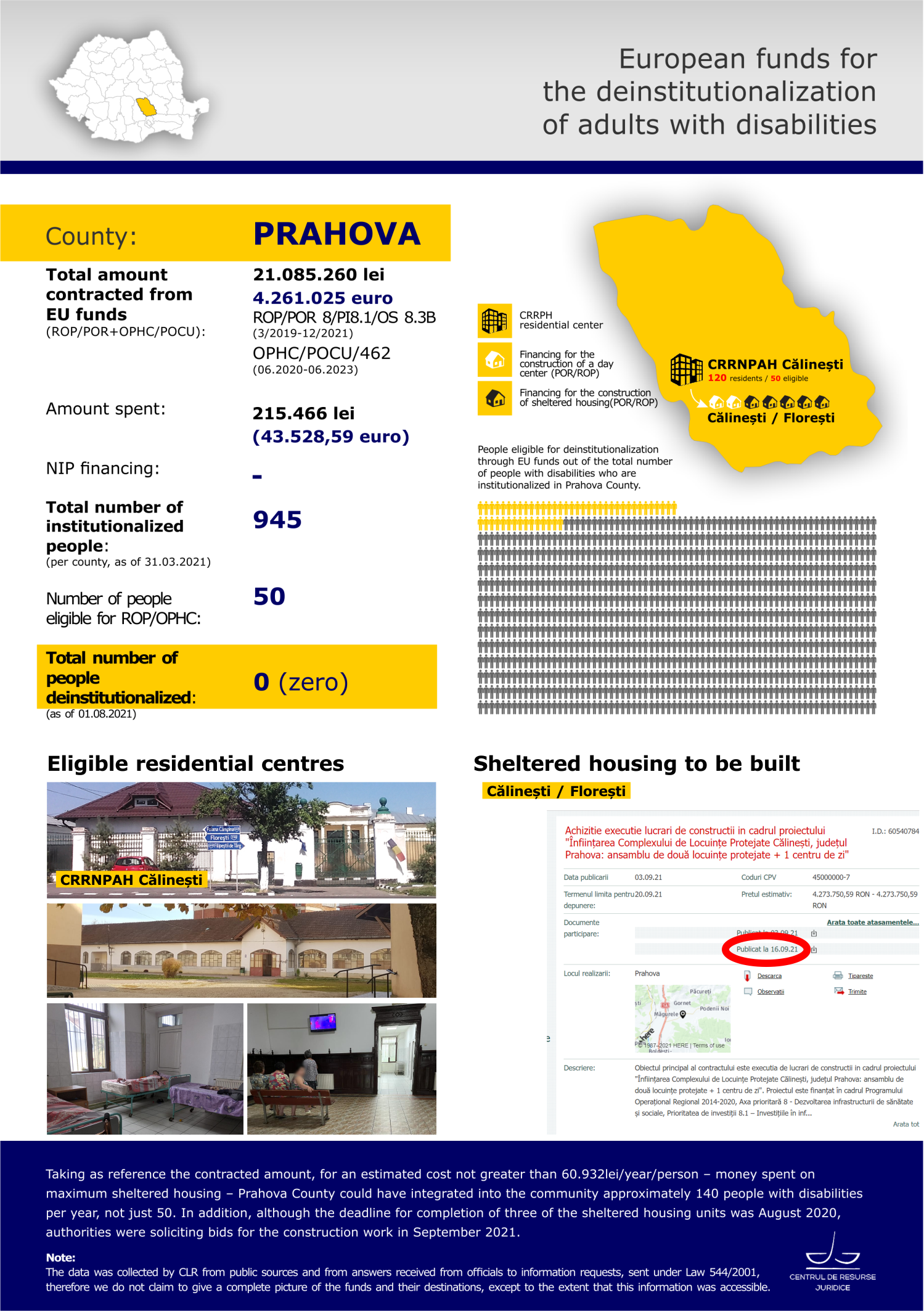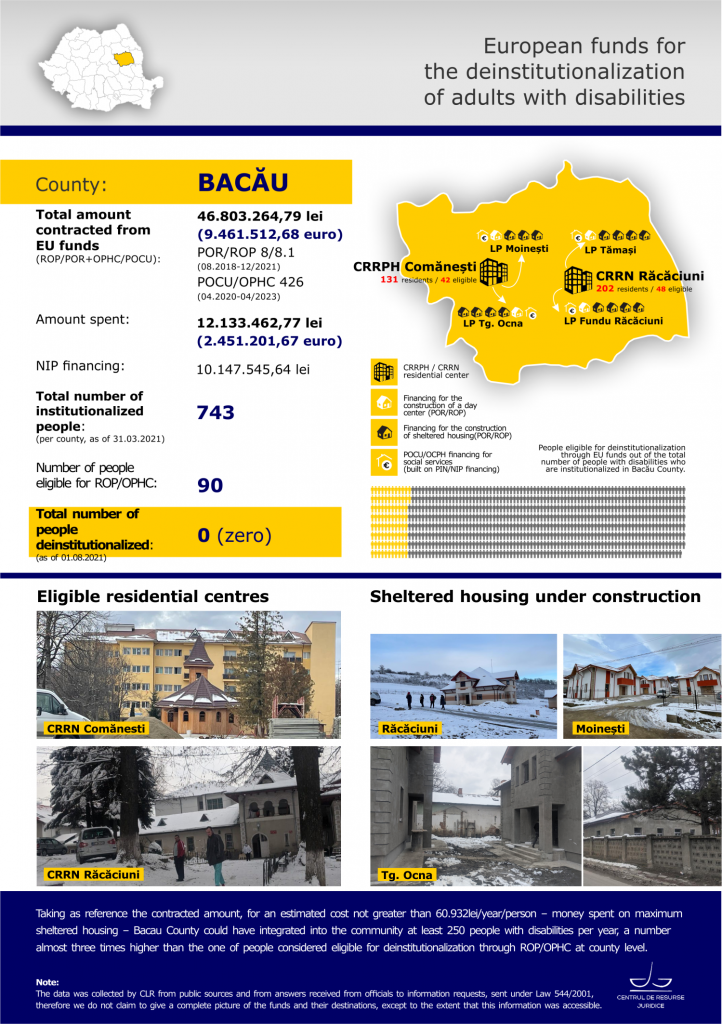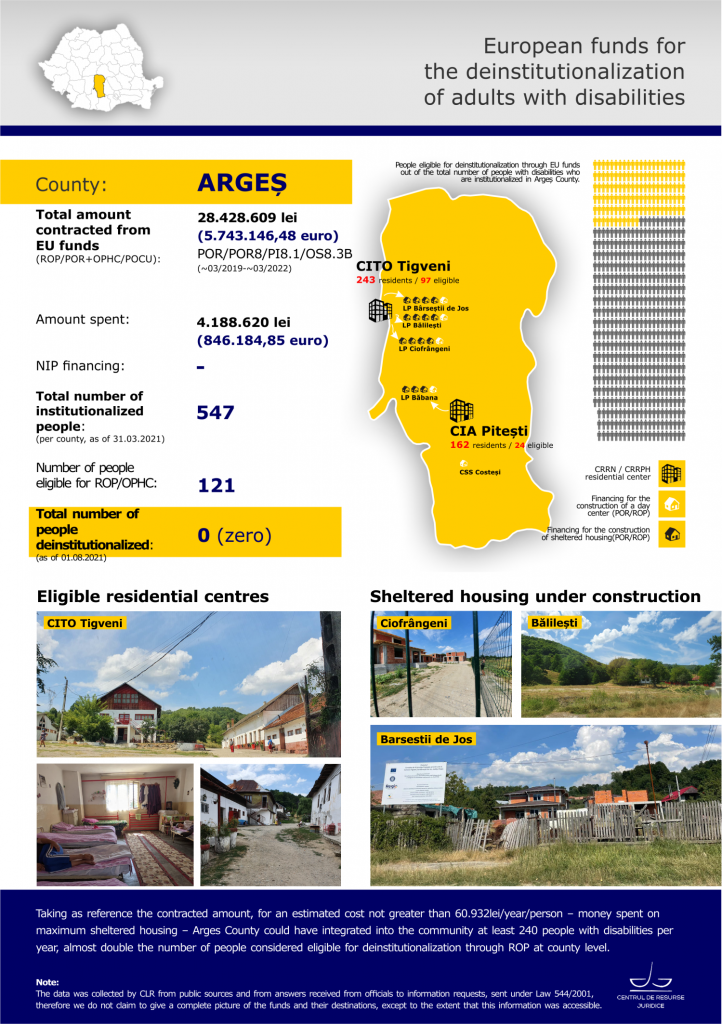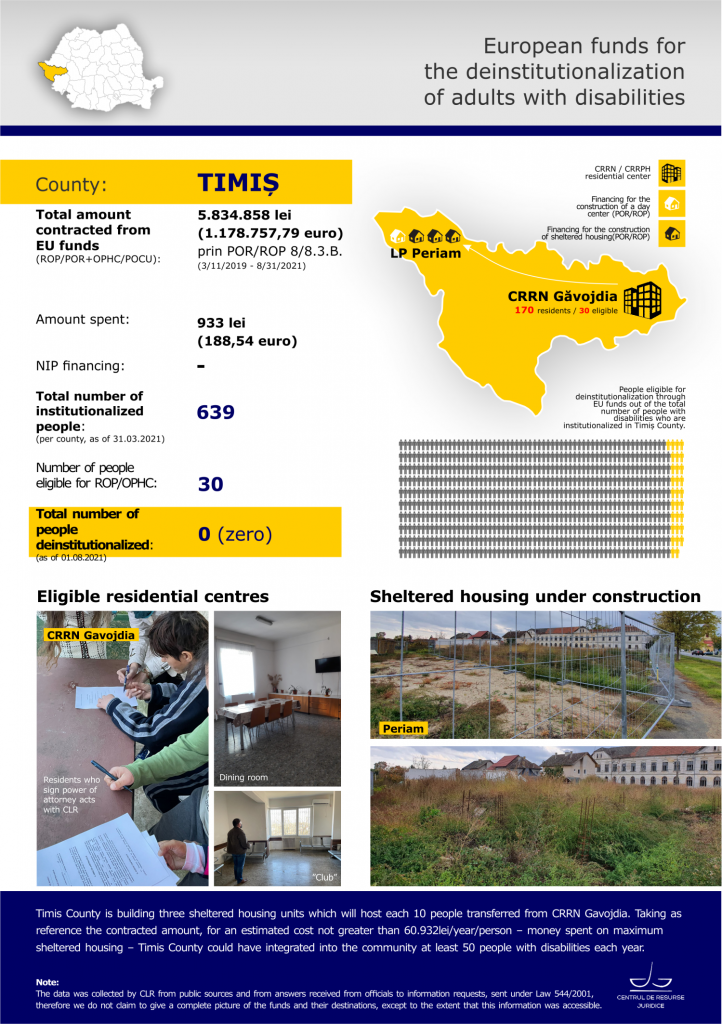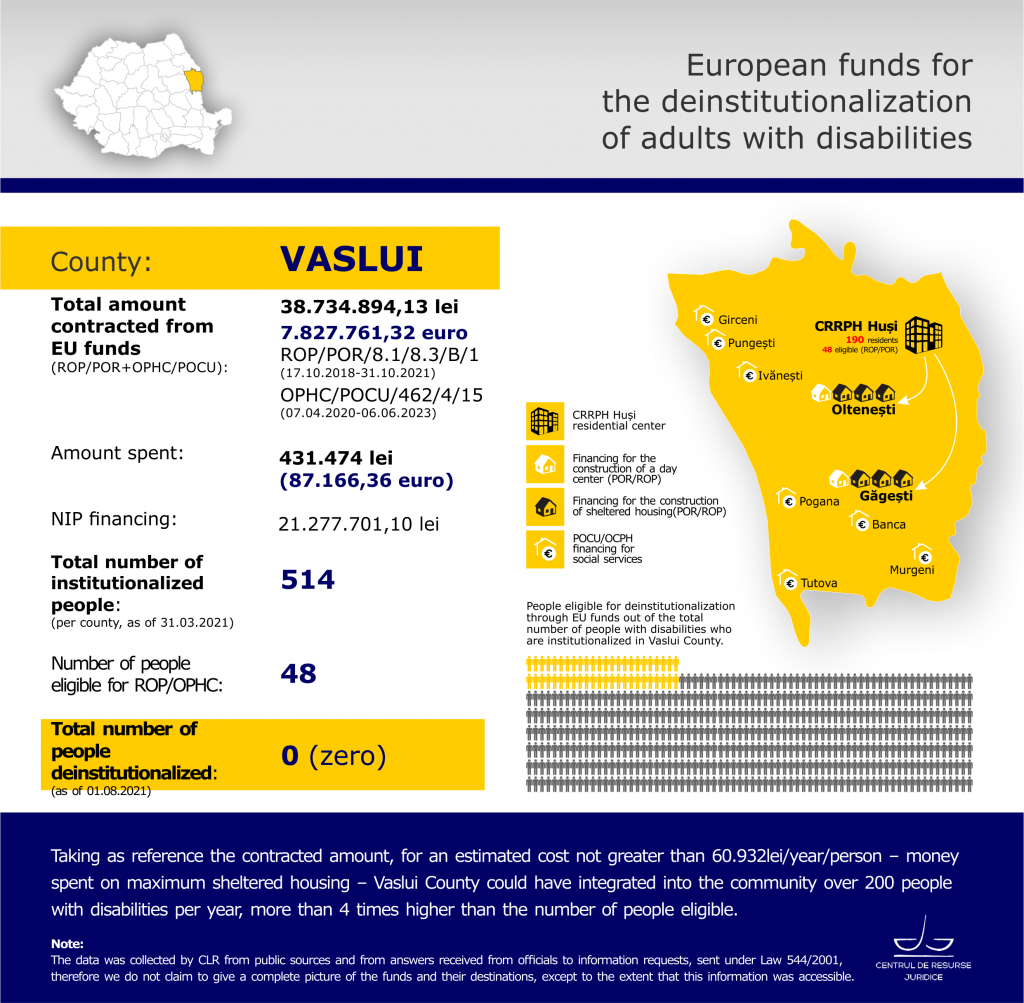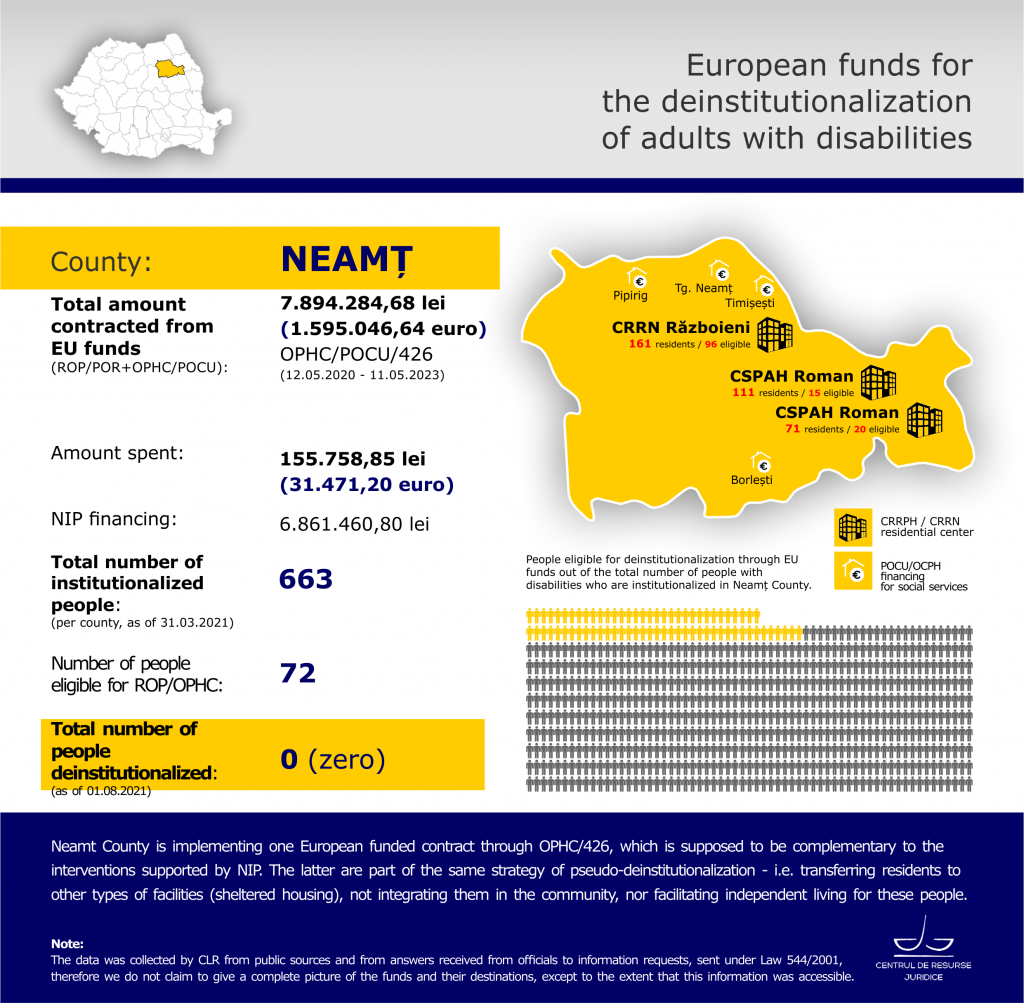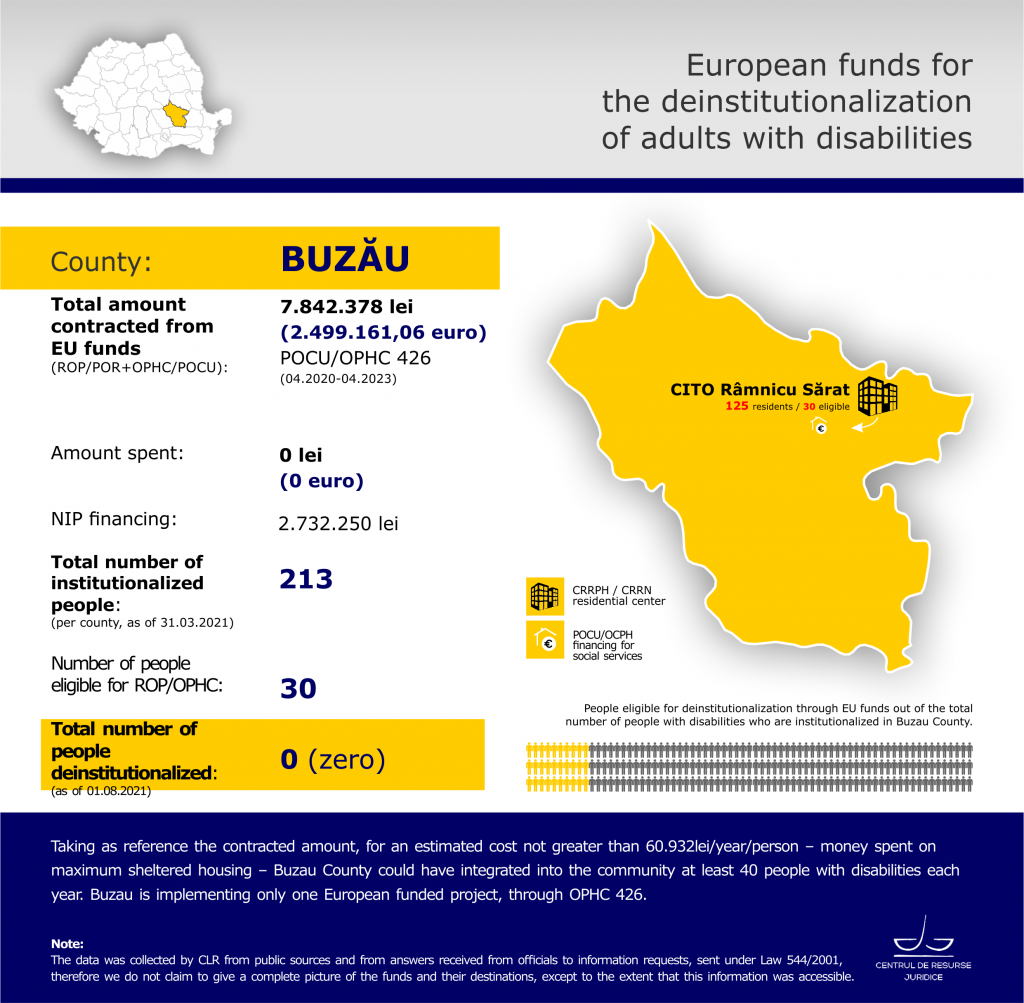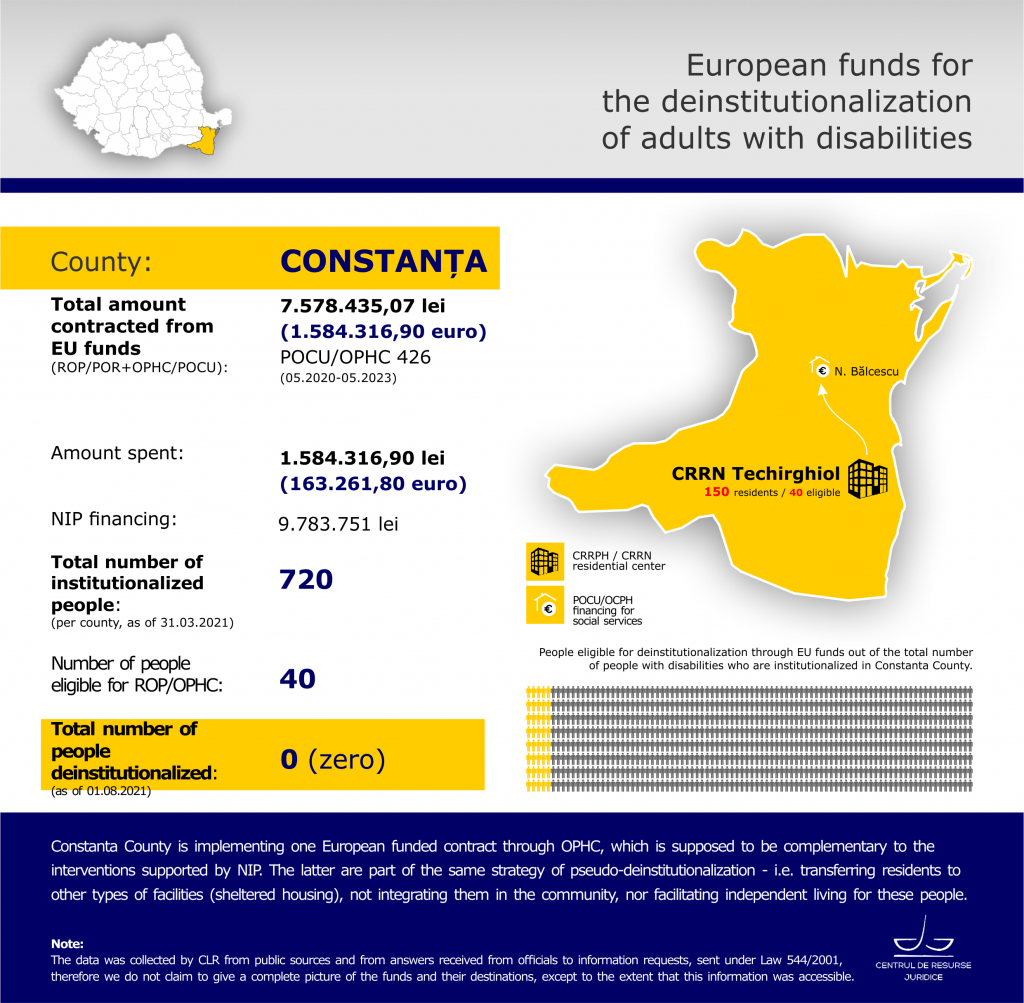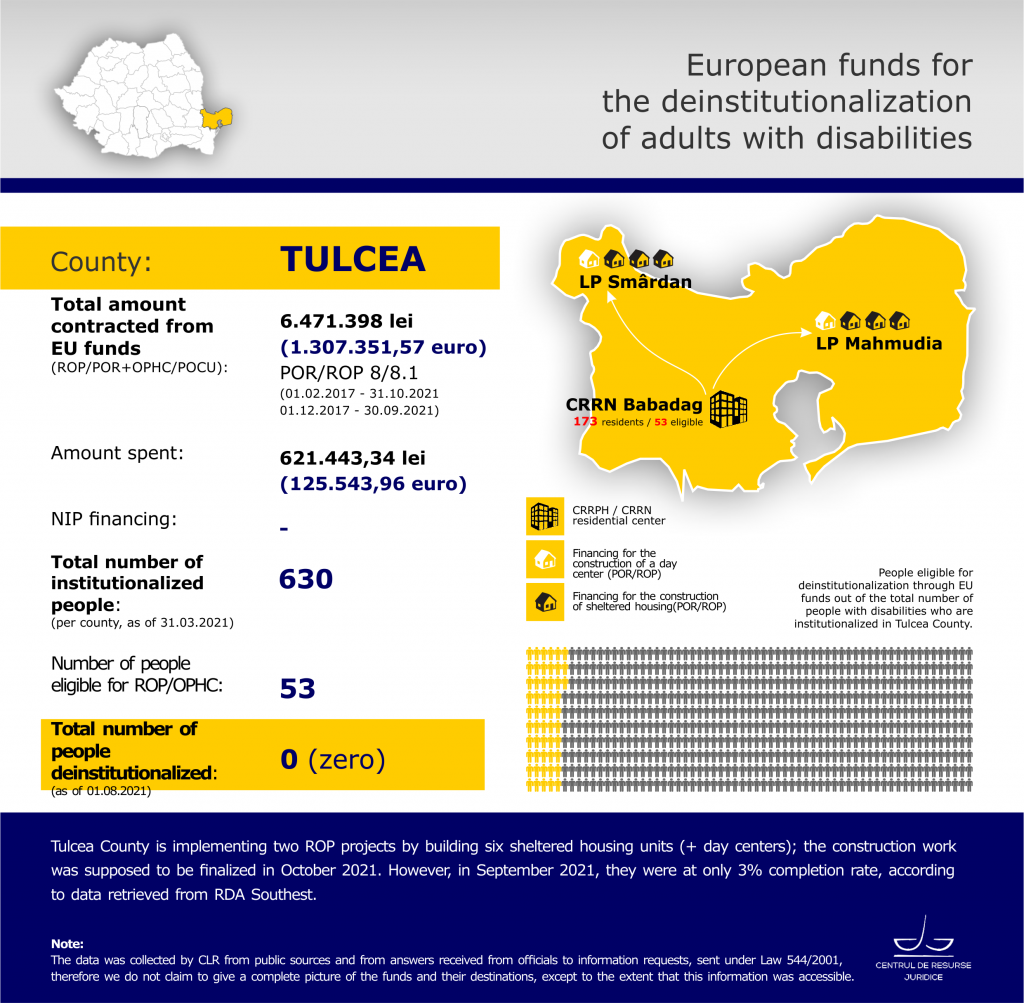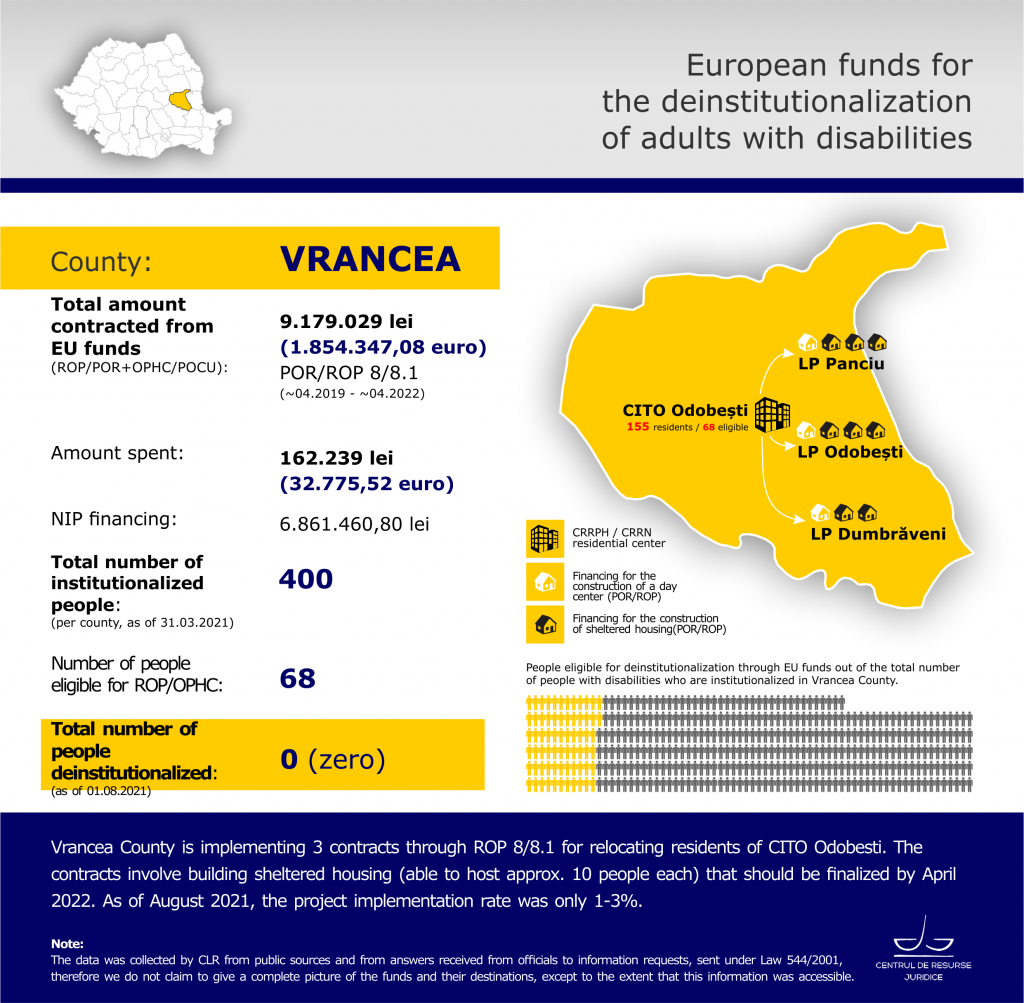After almost 4 years, Romania has spent less than 4 million Euros out of the approximately 38 million Euros initially allocated for the deinstitutionalization of only 604 people with disabilities confined in residential facilities under the control of the Romanian General Directorates for Social Assistance and Child Protection.
We urge the Romanian Government and the European Commission to fulfil their obligations under the UN Convention towards the rights of persons with disabilities to independently live in their community. The remaining unspent amount of 34 million Euro should be allocated to provide immediate contracting of housing and community support services for at least 3100 people* with disabilities who are currently institutionalized.
*calculation based on the maximum
annual cost for a person living independently
and having access to services in the
community, approx. 61,000 lei.
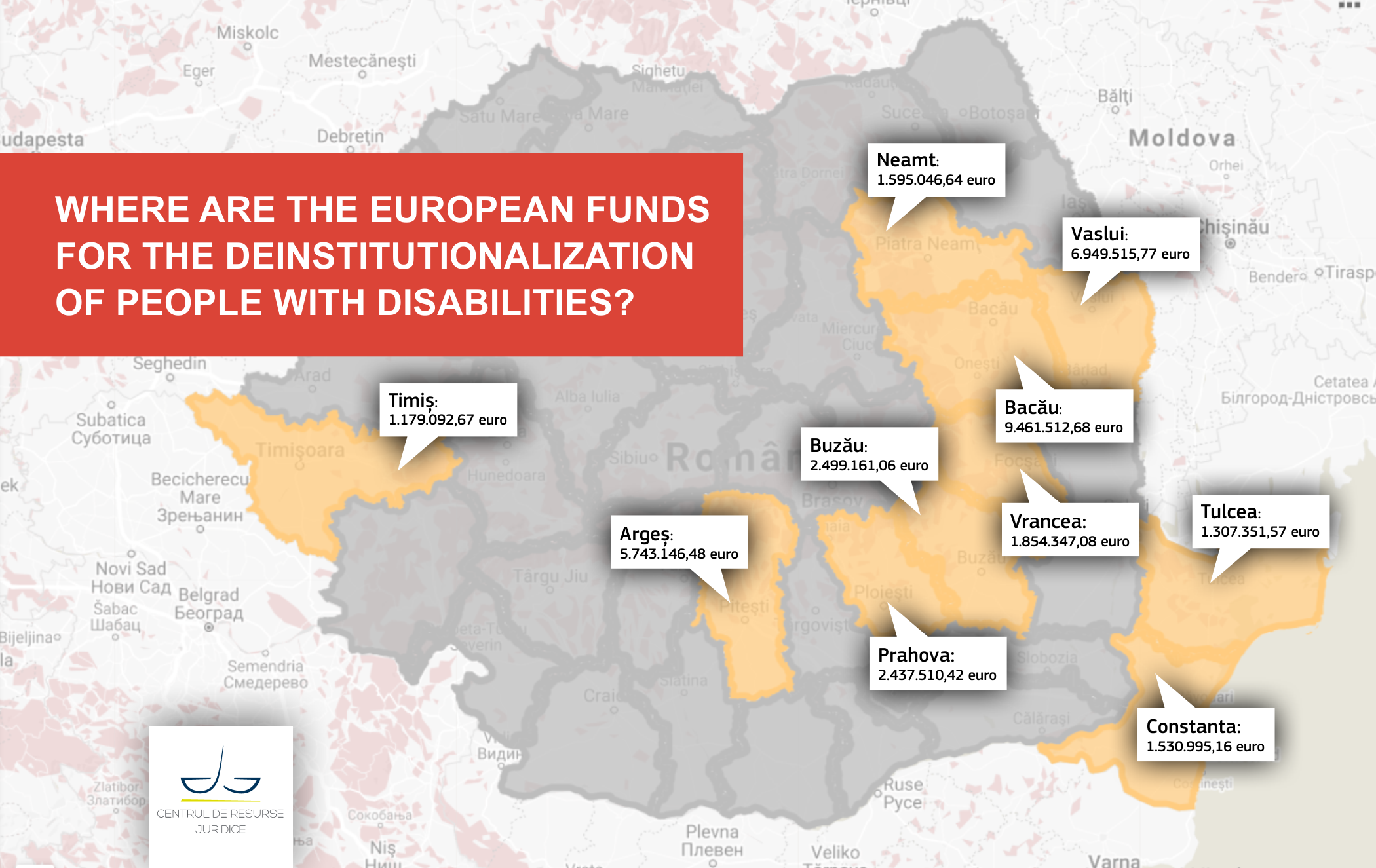
For months, the Centre for Legal Resources (CLR) has been collecting information on how much and in what ways Romania spends European funds intended for the deinstitutionalization of people with disabilities, in large centres throughout the country. We have knocked on many doors in these months, including that of the Ministry of Investment and European Projects (MIEP) which was getting ready to send the European Commission the priority guidelines for the Operational Programme for Inclusion and Social Dignity (POIDS) (details here and aici – în Romanian only. See also the Full CLR – MIEP correspondence HERE).
POIDS is the programme that will secure another tens of millions of euros for the Romanian government, funds that among others things are also supposedly used for the deinstitutionalization of adults with disabilities, using the same type of investment (building smaller centres called “sheltered housing” connected to a day centre, mostly replicating on a smaller scale the living conditions in residential centres without respecting the right to independent living in the community of people with disabilities who are still institutionalized).
Nothing illustrates this better than the figures below, for the counties that have accessed and contracted European money for deinstitutionalization: prices far above the maximum standard cost for sheltered housing (which, as mentioned before, should not be the solution for independent living anyway!), delayed or even non-existent construction work, with the added suspicion of overlapping funding for the same infrastructure. A scenario that looks good on paper (tens of millions of euros for people with disabilities!), but the ground reality is far from it.
An illustrative case of how these “investments” are handled is the case of Călinești, in Prahova county, documented by CLR. ProTV field reporters set off on the trail of the millions of euros that had supposedly been used since the end of 2020, according to data obtained by CRJ, to build housing for the residents of the massive centre in Călinești. In reality, the site of the alleged 5 sheltered housing units and 2 day centres is an empty lot, with no sign of any construction work. The CRJ team traced the leads from the contracts and found out that the bid for the construction work was only being planned for the month of September, of this year…
The case of Călinești is not singular and Prahova is not the only county that makes minimum efforts for a lot of money and achieves practically nothing for people with disabilities. The other counties are not better off – those that even ventured as far as to write up projects for European funds… Moreover, Romania is about to engage again in the same kind of practice: a lot of money invested in building some walls and lost in bids and contracts over the course of years. The intended beneficiaries of these funds remain, year after year, still within the crumbling walls of overcrowded centers throughout the country. Waiting for the much-anticipated inclusion in the community, some end up dying in these dreadful residential centers.
CLR will routinely publish data collected on each county, project and centre and the information will be added to the map below, a tool we designed to track how the authorities spend the money that is supposed to be facilitating access to independent living for people with disabilities who are still institutionalized.
Below are a few examples that illustrate, in figures, the flawed interpretation of what deinstitutionalization and support for independent living should mean for people with disabilities in Romania:
One can clearly see the pattern: in Romania deinstitutionalization done with European funds means lots of money allocated for buildings, many located on the edge or even outside the community, that are less crowded or moldy than the usual segregated facilities but are nowhere close to an actual step forward in the direction of giving access to independent living.
Real deinstitutionalization should have meant using the resources to subcontract services or engage actors in the community; instead of contracting out the construction of sheltered housing (in reality just multi-roomed houses, mostly located at the edge of a field) attached to other renovated old buildings pompously called Day Centres (former medical offices, abandoned schools, etc), the funds should have been invested, for example, in rent vouchers or the purchase of social housing.
The same resources could also have been used to fund mobile support teams and to facilitate easy access to services for all members of the community, not just to finance ineffective plans limited to those in sheltered, satellite housing. However, all these possible strategies will have to wait, because there is no indication that Romania will change anytime soon its strategy for allocating European funds for people with disabilities and will most likely continue, through POIDS (the Operational Programme for Inclusion and Social Dignity), to waste the money on building new walls around these people, literally.
For more details:
Georgiana Pascu
programme manager Advocate for Dignity / CLR
georgiana.pascu@crj.ro
____________________________
Legend:
CRRN/CRRD – Center for Rehabilitation and Rehabilitation of the Disabled
PIN/NIP – National Interest Programme. NIP/PIN is initiated by ANDPDCA/ National Authority for the Rights of Persons with Disabilities Children and Adoptions, and aims to develop social services that lead to the full participation of people with disabilities in society. The investments are mainly addressed to the deinstitutionalization of adults with disabilities in residential centers with a capacity of less than 120 beneficiaries.
OPHC/POCU – Operational Programme Human Capital
RDA/ADR – Regional Development Agency
ROP/POR – Regional Operational Programme
____________________________
Note: The data was collected by CLR from public sources and from answers received from officials to information requests, sent under Law 544/2001, therefore we do not claim to give a complete picture of the funds and their destinations, except to the extent that this information was accessible.
Any retrieval of information and images must cite the source: © CRJ, 2021.
____________________________
The data are collected by the Center for Legal Resources within the project “Ensuring the protection of the rights of persons with intellectual and psychosocial disabilities at risk. Advocacy for the right to health and independent living ”, co-financed by the Open Society Foundations.

